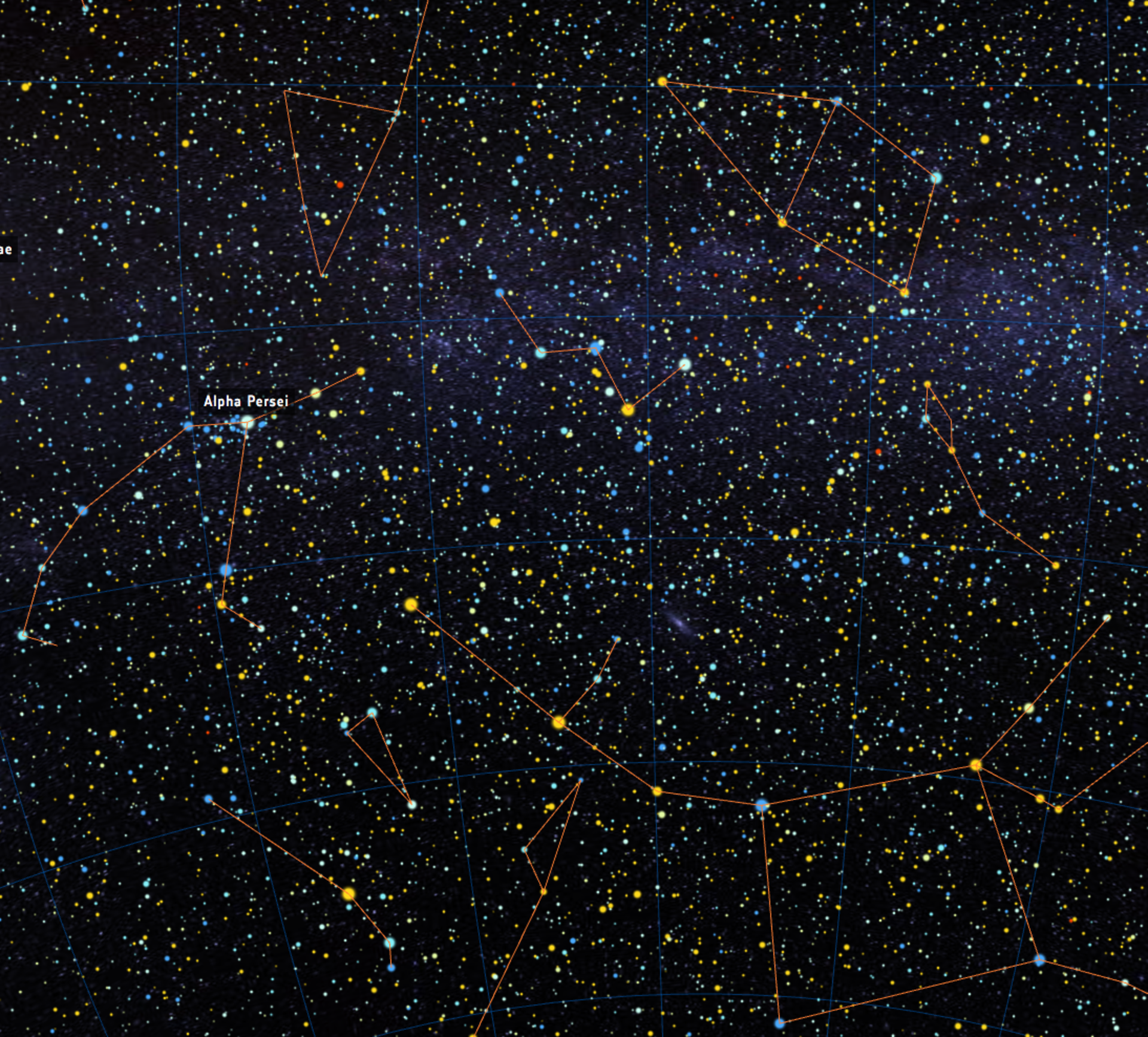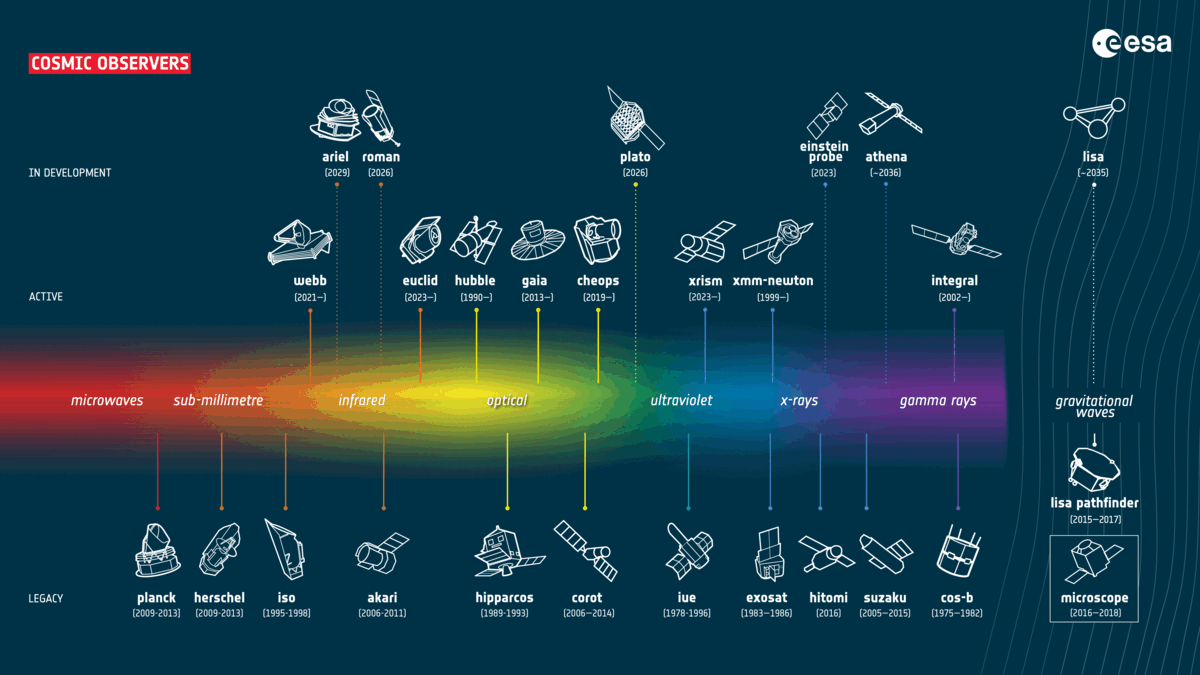Space science from home: resources for children and adults
We have curated a selection of activities for you and your family to learn more about space science from home.
Armchair astronomy
You could start with ESASky, a discovery portal that provides full access to the entire sky. This open-science application allows computer, tablet and mobile users to visualise cosmic objects near and far across the electromagnetic spectrum – from gamma rays to radio wavelengths. You will see images of the objects observed by many space science missions, operated by ESA and other agencies, as well as ground-based telescopes.
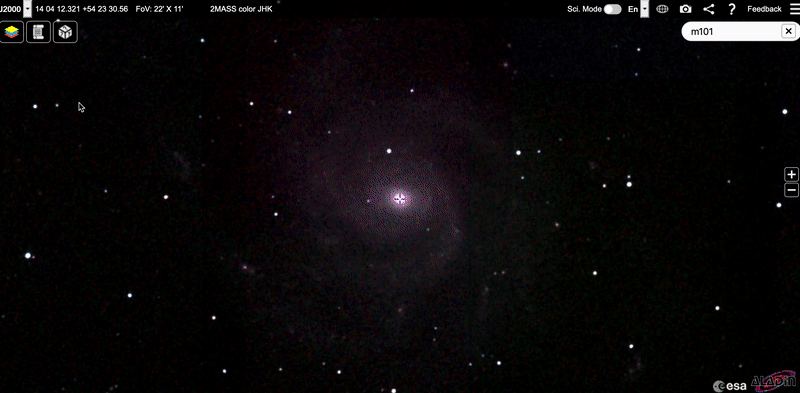
Users may experience ESASky either via the Explorer mode (visualising random objects with the dice button, entering the name of one's favourite object and navigating around, and switching wavelength and/or observatory) or via the Science mode, which also enables users to download the relevant data and much more.
ESA's Planetary Science Archive website, the go-to platform for scientists who use data from ESA's planetary missions for their research, also includes a visual gallery interface for users to browse through images and other data products.
Citizen science
A classic activity to join scientists and support their investigations from your own home is citizen science, which enables everyone to take part in real cutting-edge research in many fields across the sciences, humanities and more. There are many citizen science projects available online, most notably on The Zooniverse, the world’s largest and most popular platform for people-powered research. Active citizen science projects based on ESA data are available via this dedicated site.
One of the most famous projects is Galaxy Zoo, launched in 2007 to invite volunteers to support astronomers in the visual inspection and classification of the shapes of galaxies in astronomical images. Galaxy Zoo has engaged hundreds of thousands of volunteers, leading to dozens of publications based on the input of citizen scientists.
A more recent project that you can get involved in is Gaia Vari, in which citizen scientists are tasked with classifying variable stars – those that change in brightness over time – imaged by ESA’s Gaia mission. Gaia Vari will help scientists organise and categorise what we know of the millions of stars Gaia has observed, toward the next Gaia data release in 2025. You may actually discover the most interesting stars!
Exploring stars in the Milky Way


Access the video
Another online resource to learn more about our place in the cosmos is ESA's Star Mapper, an interactive visualisation to explore the sky as measured by the Hipparcos mission. Hipparcos, which operated from 1989 to 1993, was the first space astrometry mission, obtaining precision measurements of the positions, motions and distances of more than 100 000 stars. It had a major impact on many areas of astronomy research.
The successor of Hipparcos, ESA's Gaia mission, was launched in 2013 and has been charting more than one billion stars to unprecedented precision. The first, second and third Gaia data releases have been revolutionising many fields in astronomy, and plenty of new discoveries are in store.
Users may explore a subset of data from the mission's second data release through another interactive visualisation, Gaia's Stellar Family Portrait, and find out more the Hertzsprung–Russell diagram, a fundamental tool in astronomy to study the evolution of stars.
In addition, it is also possible to delve into the data from ESA's billion-star surveyor using Gaia Sky, a real-time, 3D, astronomy visualisation software developed at the Astronomisches Rechen-Institut (Zentrum für Astronomie Heidelberg, University of Heidelberg, Germany). Gaia Sky contains a simulation of our Solar System, a view of data from Gaia, and additional astronomical and cosmological data to visualise star clusters, nearby galaxies, distant galaxies and quasars, and the Cosmic Microwave Background.
Get creative
Though both competitions are now finished, you can still bring out your inner artist by building your own #WebbAtHome or mixing a #SpaceJuice.
With #WebbAtHome, we invite you to make a homemade spacecraft or rocket representing the NASA/ESA/CSA James Webb Space Telescope, from everyday household items. Take a look at our contest winners for inspiration.
If your talents lie more specifically in the realm of mixology, you might prefer to knock up a juice mocktail to represent the Jupiter Icy Moons Explorer (Juice) mission – which is on its way to Jupiter to explore the gas giant and its three large icy moons. Take a look at our winners.
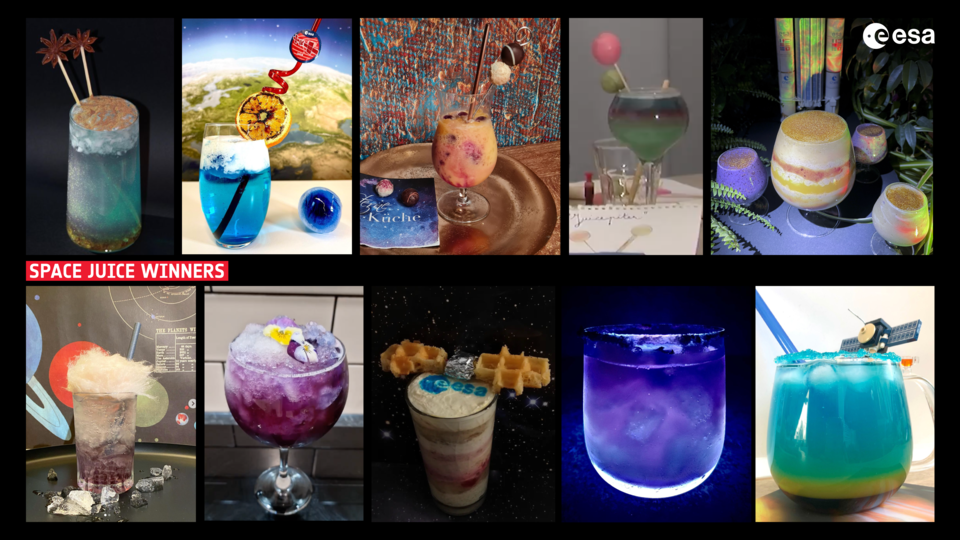
Our science mission fleet
With the SciFleet online platform you can discover more about ESA’s science missions, take a close look at their design, and even download 3D models. Explore the missions that are visiting other planets in our Solar System and the astrophysical missions observing the distant reaches of our Universe.
Space resources for children
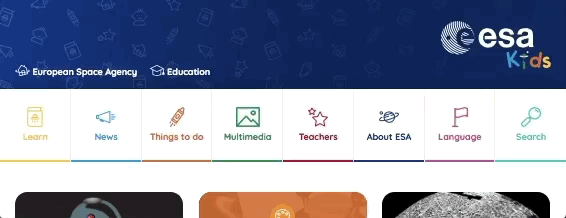
The ESA Kids website, maintained by the ESA Education office, contains lots of material and activities to entertain children at home, and learn about science and space in the meantime, including a monthly drawing competition.
For those who have access to paper and a printer, there is also the possibility to build paper models:
- Rosetta and Philae
- The Characterising Exoplanet Satellite, or Cheops
- A stellar globe based on data from the Hipparcos mission
- A memory game inspired by the BepiColombo mission
- Other space science satellites
- The Earth Observation Aeolus satellite
- One of the satellites of the Galileo global navigation system
- An Ariane 5 launcher
- The Columbus laboratory on board the International Space Station.
Finally, you can find below a selection of animated videos featuring some of ESA's space science missions, investigating planets and other celestial bodies in our Solar System, and beyond (these videos are available in several languages). Most of these videos are part of a set. Click on the video and then on the tag under the description to find the full set.


Access the video


Access the video


Access the video


Access the video
Meet Hera, ESA's asteroid defence mission
Access the video
Engaging students in STEAM
Cooperation through Education in Science and Astronomy Research (CESAR) is an ESA educational initiative with the main aim to engage school students with the wonders of astronomy, science and technology.
CESAR offers different online space science experiences to learn about a variety of topics ranging from the planets in our Solar System, to how stars form and evolve, and the dark components of the Universe. The materials are adapted to all ages!
To take part in this adventure register here.
This article was published on 20 March 2020 and updated on 2 January 2023.


